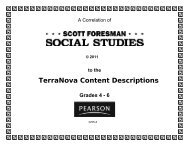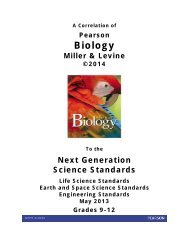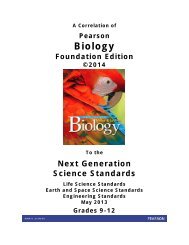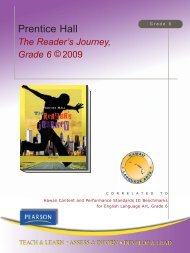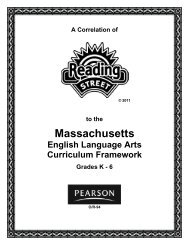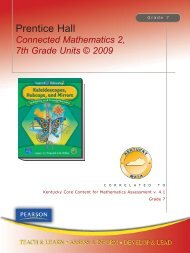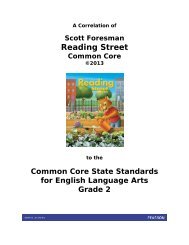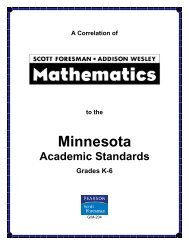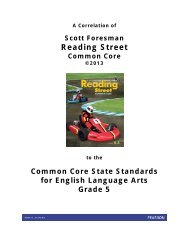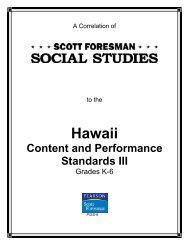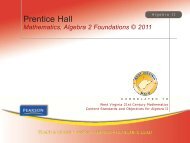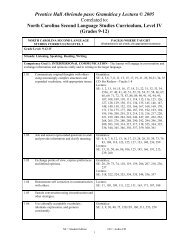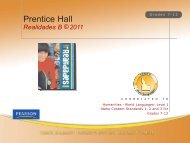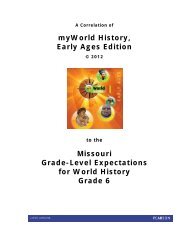Scott Foresman Reading Street - Pearson
Scott Foresman Reading Street - Pearson
Scott Foresman Reading Street - Pearson
You also want an ePaper? Increase the reach of your titles
YUMPU automatically turns print PDFs into web optimized ePapers that Google loves.
<strong>Scott</strong> <strong>Foresman</strong> <strong>Reading</strong> <strong>Street</strong> © 2008to theCommon Core Georgia Performance Standards (CCGPS)Grade 5Common Core GeorgiaPerformance Standards – Grade 5b. Use narrative techniques, such asdialogue, description, and pacing, todevelop experiences and events or showthe responses of characters to situations.c. Use a variety of transitional words,phrases, and clauses to manage thesequence of events.<strong>Scott</strong> <strong>Foresman</strong><strong>Reading</strong> <strong>Street</strong> © 2008SE: 85, 281, 359, 433, 499TE 1: 85, 89g–89h, WA2–WA9; 2: WA2–WA9; 3: 287, 287g–287h, 359, 363g–363h; 4: 433, 435g–435h, 499, 503g–503hThe Write Now pages in the Student Editionpresent a variety of narrative writing forms,including personal narrative, charactersketch, animal story, tall tale, and skit. Thedaily Writing sections in the accompanyingTeacher’s Edition lessons guide studentsstep by step through the writing process.For example, on Days 1 and 2, studentsanalyze a writing model and plan a firstdraft in which they organize their ideas,taking into consideration the elements ofthe particular kind of narrative writing.Also, the Writing and Assessment (WA)pages guide students through a five-stagewriting process, from narrative writingprompt to finished product.TE 1: 85, 85g–85h; 2: WA2–WA9;3: 345g; 4: WA2–WA9The use of time-related clue words are firstdiscussed in lessons related to writing afriendly letter. Students can applytransitional words, phrases, and clauses totheir narrative writing as well.The program’s Comprehension strandlessons focus on sequence and clue wordsand phrases that show sequence. Studentscan apply their understandings to their ownwriting. (See, for example, TE 1: 90–91,97, 121). In addition, as students revisetheir writing for clarity, encourage them touse time-related clue words and othertransitional words in their writing. Remindstudents that time order words and phrasesinclude first, next, then, last, finally, after,before, later, in the meantime, and phrasesthat mention times of day, days, months,or years.SE = Student Edition25TE = Teacher’s Edition



